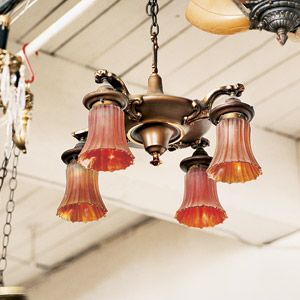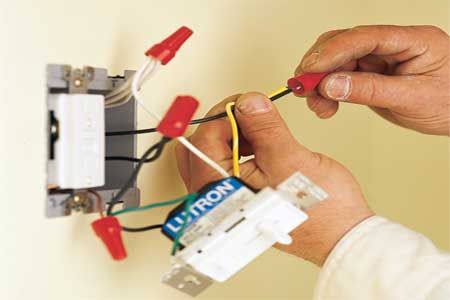
Whether you’re looking for a romantic setting or just a place to unwind after a hard day’s work, dimming the lights can have a lovely effect on a room. Your tranquility won’t last long, though, if your dimmer switch causes your fixture to emit an audible hum or buzz.
Not all dimmers cause a buzz, but when they do they can be a pain. Understanding why it happens is your first step in choosing your strategy to eliminate it.
It may look as though a dimmer simply reduces the amount of light produced by your lamp, but that’s not what’s happening. Although what your eye perceives is less light, a dimmer switch is actually turning the light on and off extremely fast — up to 120 times per second. So your lamp is producing the same amount of light, but for less time. The effect on your eye — and your mood — is that of dim light.
That on-and-off cycling can cause the filament in the light bulb to vibrate, causing an audible buzz. There are a couple of ways to eliminate the noise:
Change your light bulbs. If your fixture now has standard incandescent bulbs in it, try changing to “rough service bulbs” (the ones sold for refrigerators and garage door openers and the like). Rough service bulbs have sturdier supports for the filaments, and they’ll vibrate less.
Lower your wattage. Dimmer switches are rated by how many watts they can control, and a 500-watt dimmer may start to struggle when the total wattage approaches that number. Putting lower-wattage bulbs in the fixture will ease the load and may stop the buzz.
Upgrade your dimmer. High-end dimmer switches include internal devices to absorb some of the jolts produced by the on-and-off cycles; inexpensive switches usually don’t.
Install a lamp-debuzzing coil in the lighting circuit. An LDC wired in series with the dimmer helps regulate the flow of electricity and evens out the buzz-producing cycles.
Then just sit back, dim the lights, and enjoy the silence.

